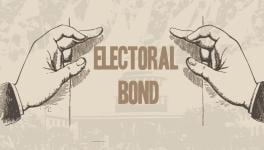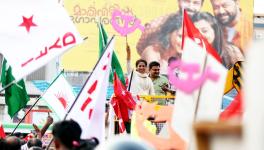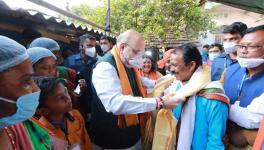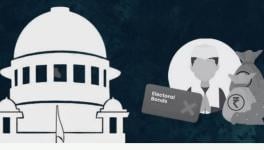The Feasibility of Bifurcating West Bengal And Creating a Separate State of North Bengal
Representational use only.
Yet again, there is stirring in West Bengal over the issue of bifurcating West Bengal and creating North Bengal a separate state. Voices have been raised about this issue time and again. North Bengal consists of the geographical areas of the present districts of Malda, Uttar Dinajpur, Dakshin Dinajpur, Darjeeling, Jalpaiguri, Alipurduar and Cooch Behar, the areas situated on the other side of the Ganges. Away from Kolkata, the capital city and economic and political hub of the state, this area has its own charms—its natural resources in terms of hills, Dooars (terai regions) and plains, rivers with unique natures, torrential during the monsoon and near-dry towards the close of summer. The climatic conditions, with excessive rainfall, have contributed to the exuberant growth of vegetation and forests, undulations and sloped lands have helped growth of tea gardens in the hills and the Dooars. Tea gardens have now been extended to the plains which used to be cultivated for growing paddy and jute in the past. Natural beauty of hills, tea gardens and forests associated with climatic conditions contributed to the growth of the tourism industry in the region. Home-stays have become quite popular in recent years. North Bengal is thus famous for its three T's—Tea, Timber, Tourism— the three important sources of livelihood in the region.
The demographic composition of the people living in the region is quite fascinating too. People belonging to all the four families, namely Austric, Tibeto-Chinese, Dravidian and Indo-European reside in the region. Of course, Rajbanshis from the Mongoloid stock under Indo-Chinese family are the single largest group. Others various ethnic groups residing in the area are Nepali (Gorkha), Bhutanese, Tamang, Lepcha, Limboo, Mech, Rabha, Oraon, Munda, Santhal, Malpahari, Kharia, Madhesia, Jugi, Khen, Pan, Palia, Deshi, Nasya Sekh (Rajbanshis converted to Islam), etc. Most of them have their own languages. In addition, there is Sadri or Sadni, a common medium of communication used by the tribal people of the region. Such is the diversity possessed by North Bengal.
Diversities have been noticed in the political field too. Take Darjeeling, one of the component districts of North Bengal. Political history of Darjeeling is intertwined with the history of Bengal, Nepal, Bhutan, Sikkim and British East India Company. By the Treaty of Sugauli in 1815, Nepal ceded 4000 square miles of its territory to British India, who handed over this land to the Rajah of Sikkim by the Treaty signed at Titlya in 1817. Then, in terms of the settlement of a dispute after ten years of the Treaty, Sikkim including Darjeeling was made a buffer state between Nepal and Bhutan. Finding the climate of the area suitable for a sanitarium for the British troops, the Governor General wanted lease of the land and the Sikkimputtee Rajah, out of friendship for him, granted lease of 'all the land south of the Great Rungeet river, east of the Balasur, Kahail and Little Rungeet rivers and west of the Rungno and Mahanadi rivers', on 1st February, 1835. Dr. Campbell brought China tea seeds from Kumaon region in 1841 and started growing tea which was followed by some others. Gradually a number of tea estates started operating in the area. Rapid growth of tea-based activities in the area made the Rajah jealous, who then imprisoned Dr. Campbell and Sir Joseph Dalton Hooker who were touring in Sikkim. Soon, the troops sent by the Company crossed the Rungeet and the Rajah released the prisoners, and the enmity ceased, but consequent to the trouble and further misconduct on Sikkimese part, the region was made a part of the British Indian Empire, and the kingdom of Sikkim made a protected state.
Darjeeling municipality was established long back in 1850. Darjeeling district was initially a 'Non-Regulated area', then a 'Regulated area' temporarily from 1862 to 1870. It was categorized as a Scheduled district in 1874, Backward Tracts in 1919 and then Partially Extended Area in 1935 till independence. Prior to independence, the British power, at one stage, toyed with the idea of giving back the territory to Nepal but for the refusal by the kingdom as they apprehended such gift with the politicized Gorkhas to be troublesome in future. Making it a 'Chief Commissioner's Province' was also an idea toyed with by the British. The then leaders of the Muslim League came to Darjeeling, held talks with the local leaders who agreed to the merger with East Pakistan. Pakistani flag fluttered on Darjeeling Town Hall for five days. All these speculations and confusion, however, ended when India's tricolour replaced the Pakistani flag on the Town Hall on 19th August, 1947, and the district formed with the hill subdivisions of Darjeeling, Kurseong, Kalimpong and Siliguri subdivision in the terai, was merged with the state of West Bengal. Then the district faced some demographic change as a result of the influx of thousands of Tibetan refugees consequent to the annexure of Tibet by the People's Republic of China in 1950. Large scale immigration from Nepal was a natural phenomenon during the British rule.
All these happenings contributed to make Darjeeling a very complex identity—ethnically, socially, economically and politically. A diverse ethnic population gave rise to socio-economic-political tensions that demanded careful and sympathetic handling in proper perspectives. The Hillmen's Association formed in 1917 demanded administrative separation. The Akhil Bharatiya Gorkha League was formed in 1928. Gorkhas had been expressing their grievances through these organisations. The impact of all such movements was however, quite insignificant. The demand for the creation of a separate state of Gorkhaland along ethnic lines, raised by the Gorkha National Liberation Front (GNLFF) under the leadership of Subash Ghishingh, grew popular in the 1980s.
A whole lot of issues relating to the 'identity of Gorkhas' were raised by the GNLF. Bundhs, social boycotts, strikes became regular features in the hills. By the autumn of 1986, the political scenario had undergone comprehensive changes characterised by arson, loot and grave law and order problems. Normal life in the hills was completely disturbed. The administration was ready to accept any term short of a separate state to bring peace and tranquility in the hills. Negotiations between GNLF, state administration and central government resulted in the formation of Darjeeling Gorkha Hill Council (DGHC), an autonomous body under the Chairmanship of GNLF supremo Subash Ghishingh. Darjeeling people got the autonomous body in place of a state. Since then, there have been a lot of developments taking place in the hills that diluted the situation and the demand for separate state of Gorkhaland almost subsided. This is about Darjeeling, the northern part of North Bengal.
Let us now move to the other important part—the eastern part, namely Cooch Behar, which was a part of Pragjyotishpur and ancient Kamrup. Then the eastern part of it became part of Assam and the western part became the estate of Cooch Behar. Kamrup had its own famous history, its own anthropological and linguistic characteristics. Bhagadatta, the famous king of Kamrup is claimed to have participated in the battle of Kurukshetra of the Mahabharata era. Vaskarvarman, the seventh century king of Kamrup, who was contemporary to Harshavardhana of Kanauj and Shashanka of Bengal, ruled over the whole of the Brahmaputra valley of Assam, extended upto Karatoa river in North Bengal. Hieu-en-Tsang, the Chinese traveller, happened to visit Vaskaravarman's kingdom and left very significant comments about its people and language spoken in the kingdom. The region was known as Kamta in the 15th century when the king assumed the title 'Kamateshwar'. The region was under the Bhuiyans for some time .
Biswa Singha of Koch-Rajbanshi dynasty occupied the territories under different Bhuiyans and consolidated it as a kingdom in 1515. The kingdom was extended and further consolidated by his son Naranarayan, ably supported by his brother Chila Rai who was one of the greatest Generals of the world. Kings of this dynasty ruled over this kingdom by the name Cooch Behar state which was the biggest Princely State in the whole of eastern India till 1949, when the state was merged with the Dominion of India. Here, we need to look at the accession process.
The States Ministry, headed by Sardar Patel and V. P. Menon as the Ministry Secretary put hard labour of continuous negotiation with the Princes (numbering around 580) to bring them into the Dominion. In conjunction with the Princes, the Ministry drafted an Instrument of Accession and a Standstill Agreement. When all the big Maharajas and Nawabs including those related to the Cooch Behar Raj family signed the Instrument of Accession and the Agreement, the Maharaja of Cooch Behar had no other option. He signed the Instrument on 9th August, 1947. After issuance of some necessary amendments and completion of other required formalities, the merger agreement was signed by the Maharaja on 28th August, 1949 when the state was made Chief Commissioner's Province. Then it was decided to merge Cooch Behar to West Bengal. West Bengal Government issued notification on January 1, 1950, in pursuance of GOI notification, to the effect that from that date the Chief Commissioner's Province of Cooch Behar be constituted into a district of West Bengal.
Historians and scholars have written about this event. However, acceptance of such development by the loyal subjects, descendants and relatives who used to feel proud of their glorious history and rich tradition including the language and culture, is very difficult. And this has happened in this part of North Bengal. A good number of the loyal subjects, the sons of the—the indigenous people, that is, Rajbanshi, Nasya Sekh, Jugi, etc—got frustrated and furious and they expressed their unhappiness, discontent, fury and grievances in various ways, through various movements. This was more so because of the lack of comprehensive plan for the socio-economic-political development of the indigenous people, attitude of the administration and the Kolkata-based leaders towards them.
All these caused a general feeling of deprivation and exploitation and the region saw the first outburst in the form of the Uttar Khanda Movement in the 1970s. Uttar Khanda Dal contested the Assembly election from five constituencies but secured hardly 5-7% of the votes. Their main grievances centred around the land reforms and other developmental policies of the Left Front. Initially, they concentrated on the socio-economic-political uplift of North Bengal—non-implementation of Teesta project, for example. The state government paid hardly any attention, and they shifted the priority to a separate state giving wide publicity through pamphlets, leaflets, meetings etc. The movement however, ended in fiasco because of lack of proper leadership and popular support.
This was followed by the movement of Uttar Bango Tapsili Jati O Adibasi Sangathan (Northern Bengal Backward Caste and Adivasi Organisation, UTJAS), an organisation of the students of North Bengal University which was fighting mainly on the issues of proper implementation of reservation for SC and ST categories, increasing the land ceiling, inclusion of some poor castes in Mandal Commission, etc. On some occasions, they raised a feeble voice about a separate state. This was in the 1980s.
But it was the Kamtapur People's Party (KPP) that provided a new turn to regional politics and created a new enthusiasm for protests. Formed in 1995, KPP came out with the demand for a separate Kamtapur state along with the recognition of the Kamtapuri language. With a view to achieving this, KPP brought out the history of Kamtapur state and Kamtapuri language to the forefront. KPP demanded that the spoken language of the Rajbanshis, the indigenous people of North Bengal, be known as Kamtapuri, not Rajbanshi. It was also claimed that Kamtapuri is not a variant of Bengali, but a separate language. But the Kolkata based South Bengal writers and litterateurs have quite often made objectionable and sometimes obnoxious comments about the ethnic identity of the Rajbanshis and their language and culture. It was further claimed that Rajbanshis are not Bengali. Kamtapur was a state with glorious cultural and linguistic heritage. It has all the requisites of a state. And so their demand for a separate state is highly justified.
KPP has an extremist wing known as Kamtapur Liberation Organisation (KLO). On many occasions, KLO resorted to extremist subversive activities. KLO cadres have been trained by organisations like the All Assam Students’ Union (AASU), and All Bodo Students’ Union (ABSU). They had extremist training in the Bhutan jungle also. Assisted by the KLO wing, KPP had organised various movements—both peaceful and violent—towards the end of 1990s. The result was that the movement was labelled as secessionist and separatist by the state government. The activities of the KLO reportedly supported by AASU and ABSU came handy for the state administration. KPP suffered a major setback by large scale arrest of KPP members and KLO activists. KLO was declared as a banned organisation and its cadres fled to Assam, Bhutan and Bangladesh. Jiban Singha, the head of the organisation, hid in Bangladesh. It may be noted that the KPP activities were concentrated mainly in the Terai-Dooars region. KPP participated in the parliamentary politics and contested the Assembly constituencies in the core areas of their existence but with poor results, securing hardly 10% of the votes. Getting frustrated and bewildered, Mitali Roy, one of their principal women activists, joined the Trinamool Congress (TMC) with her followers, and became the MLA of Dhupguri in 2016. Atul Roy, the main leader of the party, joined hands with TMC later on. Nikhil Roy and others belonging to the other faction of the party almost stopped the activities. With the death of Atul Roy about two months ago, KPP is now a non-functional entity.
In the midst of Gorkha Janmukti Morcha (GJMM) and KPP activities, there have been some activities of Adibasi Bikash Parishad in the tea garden areas of the Terai-Dooars. The objective was to highlight the grievances and problems of tribal people. Their activities however, did not cut much ice in the face of the role of political parties and trade unions in the gardens. Also, there was no leadership worthy of encomiums. No effective marks have been left by this tribal organisation, in spite of the fact that this areas are resided by various tribal groups, namely Oraon, Munda, Santhal, Kheria, Modeshia, Mech, Rabha, Lepcha, Limboo, Tamang, etc.
North Bengal faced another movement—Greater Cooch Behar movement, in the south-eastern region towards the early part of the present century. This movement originated in 1998. The Greater Cooch Behar People's Association submitted its first Memorandum containing their demands to the District Magistrate, Cooch Behar on October 26, 1998,, and then to the Union Home Minister on June 18, 2000. The Association was initially formed by the descendants of Cooch Behar Raj family and their demands principally related to the issues connected to the Accession of Cooch Behar to the Dominion of India and its merger to West Bengal as a district. I have briefly narrated the history above wherein it has been mentioned that the Maharaja had signed the Instrument of Accession on August 9, 1947, and Merger Agreement on August 28, 1949. The Agreement contained nine Articles and Article 1 reads: "His Highness the Maharaja of Cooch Behar hereby cedes to the Dominion Government full and exclusive authority, jurisdiction and power for and in relation to the Governance of the State and agrees to transfer the administration of the State to the Dominion Government on the 12th day of September, 1949—And from the said day, the Dominion Government will be competent to exercise the said power, authority and jurisdiction in such manner and through such agency as it may think fit."
The other Articles are related to various privileges and entitlements of the Maharaja, His family and the employees of the State. The Association challenged the Agreement and imputed various intentions of the Union and State governments. They claimed that Dr. Bidhan Chandra Roy got the State merged with West Bengal by force; Cooch Behar was mistaken by the Association as a 'C'-Category State too. They demanded proper implementation of the Agreement, which, they claimed, contained commitment and assurances about history, literature, culture, education, health, food, shelter of Cooch Behar people. They gave wide publicity to this effect through pamphlets, leaflets and meetings misleading the poor, illiterate, half literate people of the region. They exploited the emotion and sentiments of the local people. The organisation resorted to violence and terrorism subsequently when few semi-literate opportunist persons came to its leadership. They created some stir and turmoil in the area. Banshi Badan Roy and a few others of one of the wings of the Association were arrested. Ananta Maharaj, the self-styled Maharaja of Cooch Behar but reportedly a Group-D employee of a central government undertaking stationed in Assam, escaped to Assam. Ananta Maharaja is a first-class cheat. From the meetings organised at various places of Cooch Behar and lower Assam, he collected, by exploiting the people's sentiments, huge amounts of money for the construction of a palace to be used for common people. He has actually constructed a palace-like building, rather a fort, and uses it as his residence. Banshi Badan Roy, after his release from the jail, has joined hands with TMC. The movement has probably ended there.
This is all about the claims for a separate state of North Bengal. The movements could hardly make any impact except for the Gorkhaland movement under the leadership of Subash Ghishingh. He could at least achieve an Autonomous body for the fulfilment of hopes and aspirations of his hill people. His successors—namely Bimal Gurung, Benoy Tamang and their followers, do not have such personality and capability and as hence they have no other alternative but to become stooges of political parties, particularly BJP and TMC. KPP and GKPA (GCPA as it is known) with the objective of ventilating the deprivation, neglect, exploitation of the Rajbanshis caused by the state administration and Kolkata-based leaders, imported distorted views of history, language and culture and cheated their own people. The results have been quite obvious—utter failures. Here I would like to say emphatically that the idea of a separate North Bengal state is not at all feasible. Apart from the reasons that have already been established, why should two Dinajpur and Malda districts accept Gorkhaland or Kamtapur or Greater Cooch Behar when they have their own glorious past—Barendra Bhumi for Dinajpur and Gaur for Malda? In fact, indigenous people of these three districts—Rajbanshi, Pan, Poliya, Deshi—have otherwise very weak feelings about the so-called Kamtapur.
If it is so, how come a voice, though feeble, is being heard to that effect? To my mind, this is simply a game being played. This might be a game plan projected by BJP, a party of extreme Brahminism, that has faced utter failure in the recent Assembly election in West Bengal, with the mischievous objective of creating problems for Mamata Banerjee. John Barla, MP, Alipurduar, belonging to the Munda tribe, who joined BJP leaving his own community's forum Adibasi Bikash Parishad, has raised this demand. This person has never been vocal even about his own tribe's development. He has now been rewarded by giving a position in the central Ministry. BJP has been trying to woo the hearts of Rajbanshi people for some time by giving false promises on various issues including recognition of Kamtapuri language, as the party did promise Gorkhaland to the Gorkhas and won the parliamentary constituency. Some of the supporters of Kamtapur state, like Uttam Kumar Barman of Assam, have joined BJP. Jiban Singha, the notorious KLO leader has once again come to the surface and has released a video containing fresh demands for Kamtapur. Amit Shah, Union Home Minister is reported to have met Ananta Maharaj in Assam during his last visit to North Bengal and Assam. So, this murmur of creating North Bengal state bifurcating West Bengal put forward by an insignificant tribal leader could be an intentional design of BJP.
As I argued, North Bengal as a state is not a feasible proposition. Mamata Banerjee, the Chief Minister should however, play a cautious role. She should avoid taking actions that encourage the activities of KPP, GKPA, and other diverse elements. She should also review the development policy with respect to North Bengal. Establishing programmes like Development Boards for different communities such as Rajbanshi Development Board, Tamang Development Board, and giving them a few lakh rupees for spending annually help only a few individuals, not the communities. North Bengal needs comprehensive development policy for the uplifting of the hill people, and those belonging to the marginalised people belonging to the SCand ST categories.
Dr. Sukhbilas Barma is a retired IAS officer and the editor of the Socio-Political Movements in North Bengal-Volume 1 and 2.
Get the latest reports & analysis with people's perspective on Protests, movements & deep analytical videos, discussions of the current affairs in your Telegram app. Subscribe to NewsClick's Telegram channel & get Real-Time updates on stories, as they get published on our website.
























